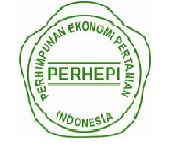Peningkatan Produksi Sayuran dan Ikan secara Terpadu dalam Sistem Bioflok-Akuaponik di Kelurahan Tanjung Johor Kota Jambi
Abstract
Increasing Production of Integrated-Vegetable and Fish in the Biofloc-Aquaponic System in Tanjung Johor Village, Jambi City. Tanjung Johor is a fish-producing center in Jambi City. However, the biofloc pond of Sekintang Dayo Farmers Group was minimally managed, so the fish yield and the farmer's income is low. The technology that was the potential to be applied was biofloc-aquaponics. Biofloc-aquaponics technology is a technology in agriculture which is integrated vegetable and fish cultivation. This technology was considered adaptive and effective in Tanjung Johor Village because this area was a populated residential area, limited land availability, prone to flooding, and the community still faced food sufficiency problems. The main principle of this technology was to conserve soil and water and increase farming efficiency through the use of nutrients from fish feed residues as a nutrient source for plants, so it is environmentally friendly. The objective of this community service was to overcome problems in the community, especially members of the Sekintang Dayo farmer group, through simple environmentally friendly technology, namely biofloc-aquaponics in integrated fish and vegetable cultivation. This activity used Participatory Rural Appraisal (PRA) method, where members of the Sekintang Dayo Fish Farmer Group interact with each other to identify the problems they face and find appropriate solutions. Group members actively followed, applied, and developed technology of biofloc-aquaponics cultivation. The program evaluation at the final stage of this activity showed an improvement in farmers' understanding and skills from 49.29% to 97.14%. The farmer group members are admitted to develop the knowledge gained and will design their own biofloc-aquaponic device by utilizing existing resources.
Keywords
Full Text:
PDF (Bahasa Indonesia)References
Assaffah, T. S., & Primaditya. (2020). Media tanam akuaponik dalam ruang. Jurnal Sains dan Seni ITS, 9(1), 19-25.
Balai Besar Pengembangan Latihan Masyarakat. (2017). Bioflok budidaya perikanan air tawar. Jakarta: Balai Besar Pengembangan Latihan Masyarakat. https://bbplm-jakarta.kemendesa.go.id/index.php/view/detil/222/bioflok-budidaya-perikanan-air-tawar (diakses 16 April 2022).
Chambers, R. (1996). PRA (Participatory Rural Appraisal) memahami desa secara partisipatif (diterjemahkan oleh Sukoco, Y). Yogyakarta: Kanisius.
Crab, R., Defoirdt, T., Bossier, P., & Verstraete, W. (2012). Biofloc technology in aquaculture: Beneficial effects and future challenges. Aquaculture, 356, 351-356.
Darmawati, Nieldalina, & Moehar, D. (2008). PRA (Participatory Rural Appraisal): pendekatan efektif mendukung penerapan penyuluhan partisipatif dalam upaya percepatan pembangunan pertanian. Jakarta: Bumi Aksara.
Dauhan, R. E. S., Efendi, E., & Suparmono. (2014). Efektifitas sistem akuaponik dalam mereduksi konsentrasi amonia pada sistem budidaya ikan. Jurnal Rekayasa dan Teknologi Budidaya Perairan, 3(1), 297-302.
Desa Tanjung Johor. (2018). Monografi Desa Tanjung Johor. Jambi: Pemerintah Desa Tanjung Johor Kecamatan Pelayangan Kota Jambi.
Diver, S., & Rinehart, L. (2010). Aquaponics – integration of hydroponics with aquaculture. Australia: National Sustainable Agriculture Information Service. http://www.attra.ncat.org/attra-pub/aquaponic.html (diakses 14 April 2021).
Firdaus, M. R., Hasan, Z., Gumilar, I., & Subhan, U. (2018). Efektifitas berbagai media tanam untuk mengurangi karbon organik total pada sistem akuaponik dengan tanaman selada. Jurnal Perikanan dan Kelautan, 9(1), 35-48.
Hadiyanto, H., & Christwardana, M. (2012). Aplikasi fitoremediasi limbah jamu dan pemanfaatannya untuk produksi protein. Jurnal Ilmu Lingkungan, 10(1), 32-37.
Marlida, R. (2020). Bioflok sebagai solusi mengatasi permasalahan lingkungan untuk akuakultur masa depan berkelanjutan. Rawa Sains, 10(1), 38-45.
Nawawi, Sriwahidah, & Jaya, A. A. (2018). Budidaya ikan nila sistem akuaponik. Jurnal Dedikasi Masyarakat, 2(1), 37-43.
Nugroho, R. A., Pambudi, L. T., Chilmawati, D., & Haditomo, A. H. C. (2013). Aplikasi teknologi akuaponik pada budidaya ikan air tawar untuk optimalisasi kapasitas produksi. Jurnal Saintek Perikanan, 8(1), 46-51.
Rini, D. S., Hasan, H., & Prasetio, E. (2018). Sistem akuaponik dengan jenis tumbuhan yang berbeda terhadap pertumbuhan benih ikan tengadak (Barbonymus scwanenfeldii). Jurnal Ruaya, 6(2), 14-20.
Roy, K. P. (2018). Agriculture: bio-Integrated farming systems. New Delhi: Amiga Press Inc.
Rusherlistyani, Sudaryati, D., & Heriningsih, S. (2017). Budidaya lele dengan sistem kolam bioflok. Yogyakarta: LPPM UPN.
Zidni, I., Herawati, T., & Liviawaty, E. (2013). Pengaruh padat tebar terhadap pertumbuhan benih Lele Sangkuriang (Clarias gariepinus) dalam sistem akuaponik. Jurnal Perikanan dan Kelautan, 4(4), 315-324.
Zidni, I., Iskandar, Rizal, A., Andriani, Y., & Ramadan, R. (2019). Efektivitas sistem akuaponik dengan jenis tanaman yang berbeda terhadap kualitas air media budidaya ikan. Jurnal Perikanan dan Kelautan, 9(1), 81-94.
Zulkarnain. (2013). Budidaya sayuran tropis. Jakarta: Bumi Aksara.
DOI: https://doi.org/10.20961/prima.v6i2.58144
Refbacks
- There are currently no refbacks.
View My Stats

This work is licensed under a Creative Commons Attribution-ShareAlike 4.0 International License.


.jpg)



1.jpg)











